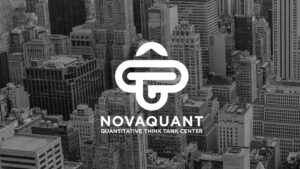
Most people think of gemstones, diamonds, and gold when they picture jewelry. Shiny, polished surfaces and intricate detailing are the hallmarks of desirable jewelry. And, yes, the visuals do matter when you’re trying to select a necklace or pair of earrings. But increasingly, today’s consumers expect that the jewelry they’re buying has been ethically sourced and crafted, as well.
Ethical jewelry has become the standard in 2025, and it originates with materials and processes that won’t harm the planet. Read on to learn more about why sustainable jewelry matters.
Defining Ethical Jewelry
Ethical jewelry is made with mindfulness toward the environment and people. It’s also made through transparent fabrication processes, meaning that anyone can see where materials are sourced and the environmental impact that goes into production. In short, ethical jewelry prioritizes production processes that minimize environmental harm, making it an ideal accessory for individuals interested in fashion and a more sustainable lifestyle.
Those creating ethical jewelry will ensure that workers are paid a fair wage and respected in their work environment. Ethical jewelry consists of materials that come from mines that value environmental stewardship and ethical operations. Alternatively, some ethical jewelry uses recycled materials or lab-grown diamonds, such as those in select jewelry from Diamondere, to lower the environmental impact. Ultimately, ethical jewelry blends aesthetic beauty with social and sustainable practices.
Seeking Certifications and Transparent Supply Chains
Simply stating that a piece of jewelry was crafted using sustainable processes is not enough for consumers. Today’s jewelers must go the extra step to validate their claims. This can involve using technology to track a jewelry piece’s progression through the supply chain. Or it may mean applying an official certification to a piece.
The Fairmined and Fairtrade Gold certification, for instance, indicates that miners are paid fairly and work in safe conditions. Jewelry with the RJC (Responsible Jewellery Council) label shows that the jewelry has undergone third-party audits to ensure ethical production standards. The RJC can also tell consumers that the jewelry’s entire journey through the supply chain has been ethical and transparent. And the Kimberley Process Certification can assure consumers that the diamonds they’re buying are not conflict diamonds.
Consumers eager to support more sustainable practices can find confirmation with these labels. They should ask for documentation verifying these labels, too. And it’s perfectly fair to ask jewelers to describe where the gemstones and other jewelry pieces they’re selling originated.
Finding Ethical Solutions
The act of mining precious metals like gold or silver isn’t exactly a positive step for the environment. The process can contaminate soil and waterways, plus lead to biodiversity loss. As an alternative, jewelry made from recycled materials can be an attractive option for buyers. Melting old jewelry or using repurposed scraps can result in stunning designs that don’t require mining.
Lab-grown diamonds are another innovation that’s helping cut down on the need for mining. They’re also less expensive, allowing more people to buy them without gouging their budgets. These diamonds are grown in a lab setting, eliminating the ecosystem concerns associated with traditional diamond mining.
Pursuing Ethical Jewelry
Ethical jewelry represents a lifestyle choice for many consumers in 2025. They’re no longer bound to traditional jewelry-making practices that can harm the environment. Innovations such as lab-grown diamonds and a creative approach to repurposing materials have enabled consumers to find jewelry that aligns with their sustainability preferences. Further, certification systems can provide peace of mind, letting consumers know they’re buying pieces that were created under safe and fair working conditions. Jewelry in 2025 is about more than making a fashion statement. It’s about making a conscientious choice that keeps the planet safer.



